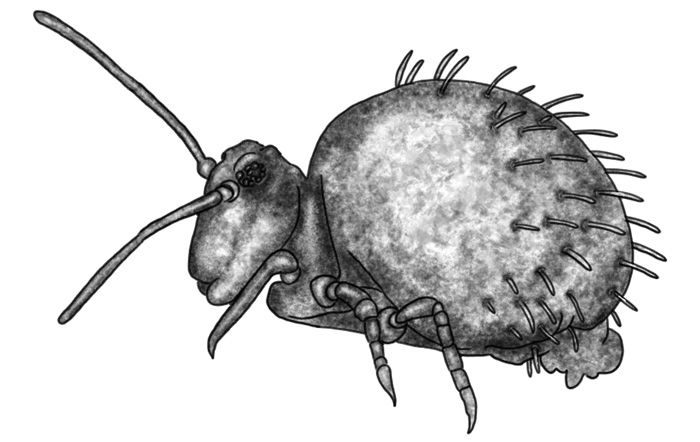
Springtails symphypleones
it is true that springtails are very small organisms and therefore often difficult to see with the naked eye, but you will certainly happen to see them jumping while lifting leaves, in your compost or in a pot
Morphological characteristics
Organisms with a globose body without wings (apterous), in 3 parts comprising several fused segments in the symphypleones (head, thorax: 3 segments, abdomen: first 4 segments fused together, and the last 2 segments are fused into a "rump"), 3 pairs of legs, 1 pair of segmented antennae; the majority of species have a folded abdominal organ called furca, presence of a ventral organ (collophore) which can reach a considerable length in symphypleones, allowing hydration, regulating gas exchange and sticking to supports.
Life cycle
Springtails are generally short-lived due to heavy predation and can reproduce very quickly. They are among the few arthropods that undergo molts throughout their lives.
Diet
Springtails feed mainly on fungi (fungivores), algae and bacteria growing on decomposing plants (saprophages). Some species like Sminthurus viridis can also feed on the leaves of living plants, mainly clover and alfalfa.
Natural predators or regulators
They are the food of many arthropods such as mites, beetles, or even ants. They have an essential role in the food chain.
Habitats
Springtails live mainly in the litter of the ground but this very diverse group can occupy many environments: rocks, trees, beaches, caves, wetlands or even on water.
Interests in the garden
Springtails play an essential role in soil fertility because they participate in the creation of microporosity (aeration and rooting), in the degradation of organic matter and therefore in the circulation of nutrients in the soil, in the dissemination and regulation of bacteria and fungi.
Did you know ?
Thanks to their furca (an organ for jumping present only in collembolans), collembolans can jump up to 100 times their size in order to escape predators.
Known as the oldest of the fossilized hexapods (organisms with 3 pairs of legs), they were already present in the Devonian, around 400 Ma ago, so well before the insects.





